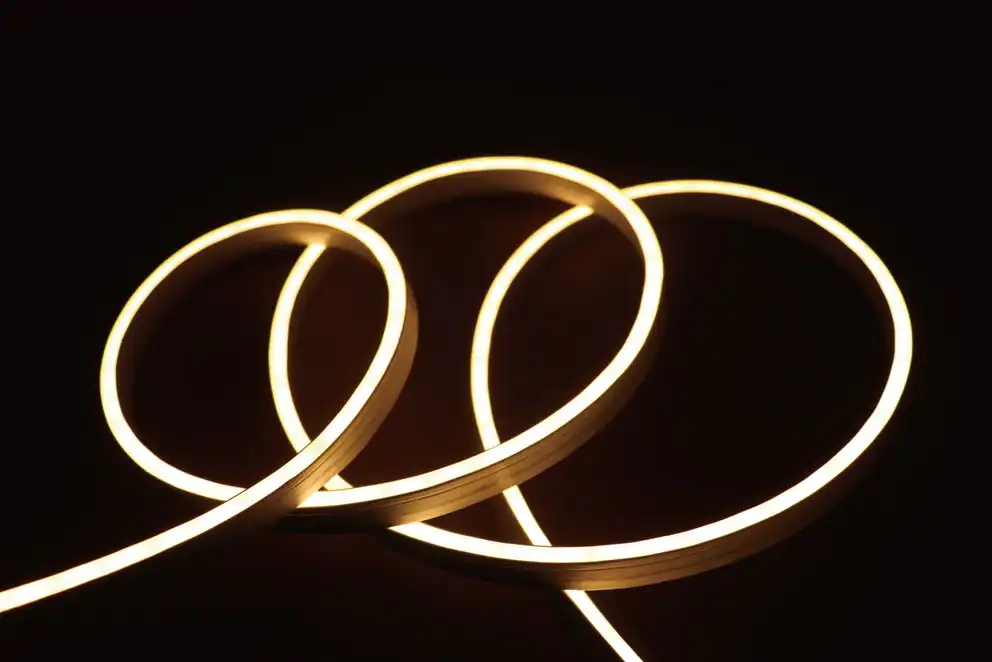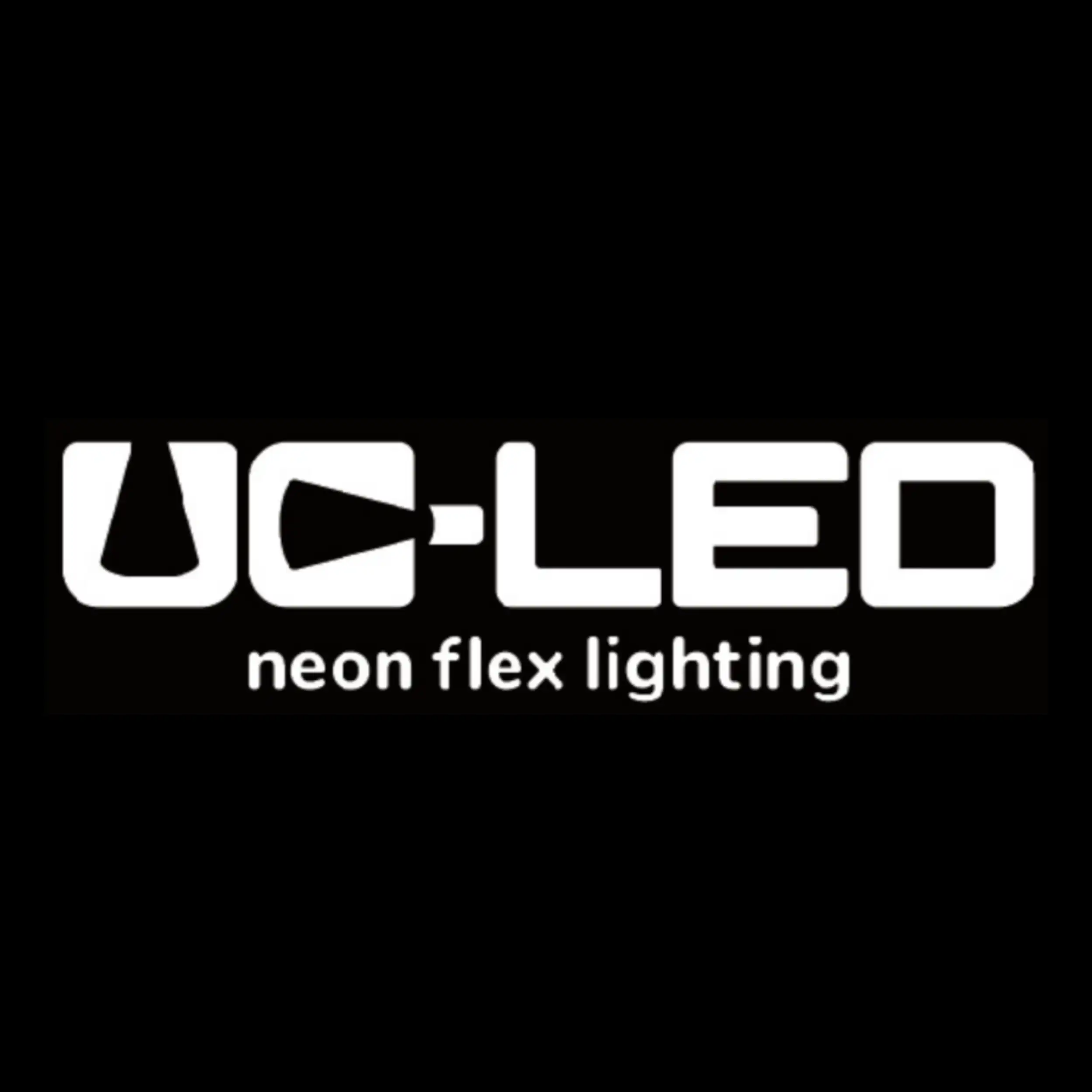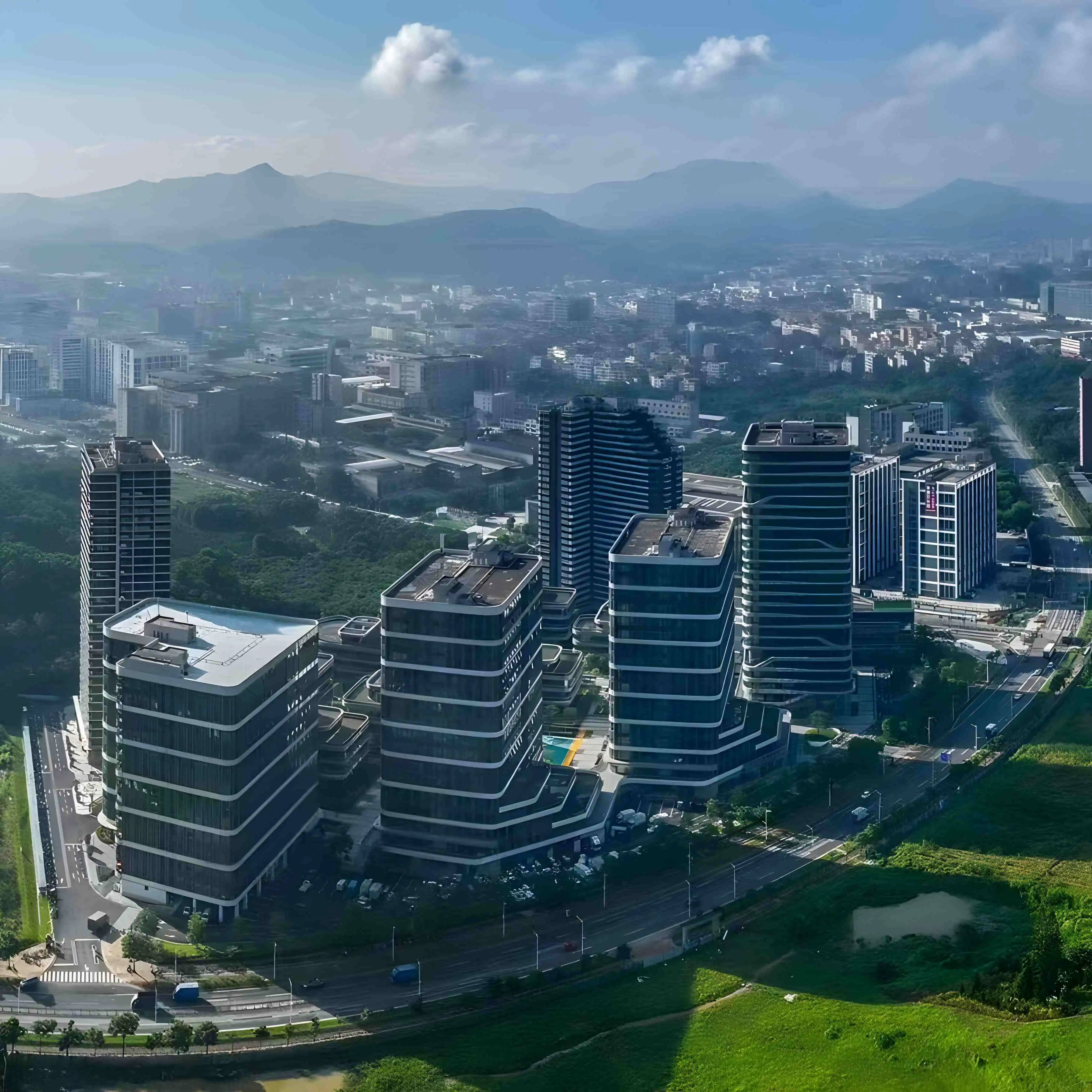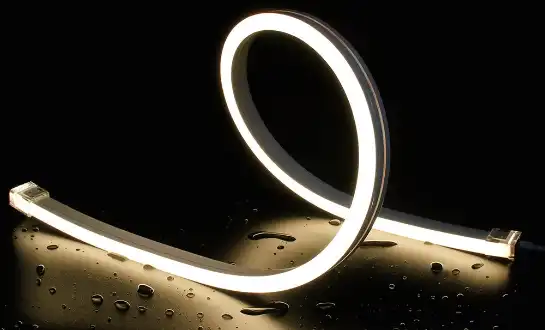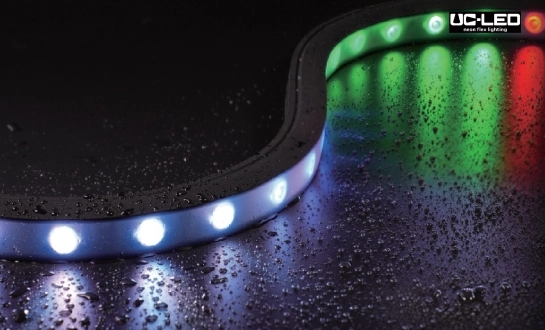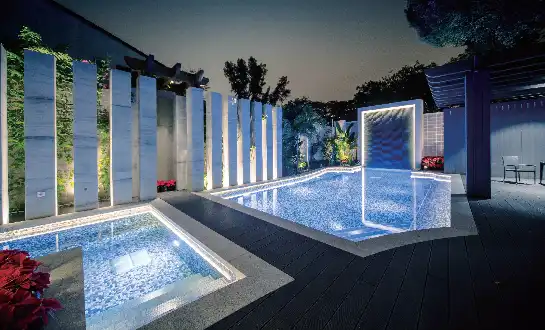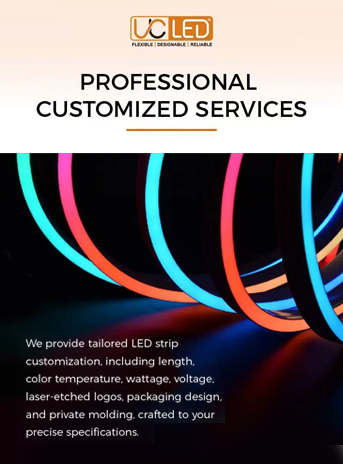The Material Advantage: Silicone vs. PVC in Neon Flex Manufacturing
When it comes to creating durable and long-lasting neon flex lighting, the choice of material plays a crucial role. Flexible silicone neon flex has emerged as a superior alternative to traditional PVC versions, offering numerous advantages that contribute to its enhanced durability and performance.
Silicone, the primary material used in flexible silicone neon flex, boasts exceptional physical properties that set it apart from PVC. Its molecular structure grants it remarkable flexibility and elasticity, allowing it to withstand repeated bending and flexing without compromising its integrity. This characteristic is particularly valuable in applications where the lighting needs to conform to various shapes or undergo frequent movement.
In contrast, PVC neon flex tends to become brittle over time, especially when exposed to harsh environmental conditions. This brittleness can lead to cracking and breakage, significantly reducing the lifespan of the lighting installation. Silicone, on the other hand, maintains its flexibility even in extreme temperatures, ranging from -40°C to 200°C, making it suitable for diverse climates and applications.
Another notable advantage of silicone is its inherent UV resistance. Unlike PVC, which can yellow and degrade when exposed to sunlight, silicone maintains its clarity and color vibrancy for extended periods. This property is particularly beneficial for outdoor lighting installations, where exposure to UV rays is inevitable.
Moreover, silicone's chemical inertness contributes to its durability. It resists degradation from various chemicals, oils, and solvents that might come into contact with the lighting during its lifespan. This resistance helps preserve the integrity of the flexible silicone neon flex, ensuring consistent performance over time.
Environmental Impact and Longevity
The durability of flexible silicone neon flex extends beyond its physical properties to encompass environmental considerations. Silicone is a more eco-friendly option compared to PVC, as it does not release harmful chemicals during production or disposal. This aspect not only contributes to a reduced environmental footprint but also aligns with the growing demand for sustainable lighting solutions.
The longevity of silicone-based neon flex translates to less frequent replacements, further reducing waste and resource consumption. This durability factor is particularly appealing in commercial and architectural lighting projects, where longevity and low maintenance are paramount.
Performance Under Pressure: Weatherproofing and Resilience
The true test of any lighting solution's durability lies in its ability to withstand various environmental challenges. Flexible silicone neon flex excels in this regard, offering superior weatherproofing and resilience compared to its PVC counterparts.
One of the standout features of silicone neon flex is its exceptional water resistance. The material's hydrophobic nature prevents water ingress, making it ideal for outdoor installations exposed to rain, snow, and high humidity. This water-resistant property not only protects the internal components from moisture damage but also maintains the lighting's aesthetic appeal by preventing fogging or condensation within the tube.
PVC neon flex, while offering some degree of water resistance, often requires additional protective measures to achieve comparable weatherproofing. These measures can add to the cost and complexity of installation, and may not provide the same level of long-term protection as inherently water-resistant silicone.
The resilience of flexible silicone neon flex extends to its ability to withstand physical impacts and vibrations. The material's elasticity allows it to absorb shocks and vibrations without cracking or breaking, a common issue with more rigid PVC versions. This resilience is particularly valuable in high-traffic areas or locations prone to vibrations, such as near machinery or in transportation hubs.
Temperature Fluctuations and Thermal Management
Temperature fluctuations pose a significant challenge to outdoor lighting installations. Flexible silicone neon flex demonstrates remarkable thermal stability across a wide temperature range. It remains pliable in cold temperatures, unlike PVC which can become brittle and prone to cracking in freezing conditions.
At the other end of the spectrum, silicone's high heat resistance allows it to maintain its structural integrity and performance even in hot environments. This thermal stability ensures consistent light output and color rendering regardless of ambient temperature changes.
Furthermore, silicone's excellent heat dissipation properties contribute to more efficient thermal management within the neon flex. This characteristic helps prolong the lifespan of the LED components by preventing overheating, a common cause of premature failure in lighting systems.
Innovative Design Possibilities and Customization
The superior durability of flexible silicone neon flex opens up a world of innovative design possibilities that were previously limited by the constraints of PVC-based solutions. The material's inherent flexibility allows for tighter bends and more intricate designs, enabling lighting designers and architects to push the boundaries of creativity.
Unlike PVC neon flex, which may develop stress points or cracks when bent beyond certain angles, silicone neon flex maintains its integrity even in complex configurations. This flexibility allows for seamless integration into various architectural elements, from curved building facades to intricate interior design features.
The malleability of silicone also facilitates on-site customization. Installers can easily cut and shape the neon flex to fit specific project requirements without compromising its weatherproofing or performance. This adaptability reduces waste and simplifies installation processes, contributing to overall project efficiency.
Color Consistency and Light Quality
The durability of flexible silicone neon flex extends to its optical properties as well. The material's clarity and resistance to yellowing ensure consistent color reproduction and light quality throughout its lifespan. This color stability is crucial for maintaining the intended visual impact of lighting installations, particularly in branding and architectural applications where color accuracy is paramount.
Moreover, silicone's optical properties allow for more even light distribution along the length of the neon flex. This uniformity eliminates the "hot spots" and "dark spots" often associated with lower-quality PVC versions, resulting in a more professional and polished lighting effect.
The combination of durability and optical performance makes flexible silicone neon flex an ideal choice for projects requiring long-term color consistency and visual appeal. Whether used in high-end retail environments, hospitality settings, or public spaces, silicone neon flex maintains its vibrant appearance and lighting quality far longer than traditional PVC alternatives.
Conclusion
The superior durability of flexible silicone neon flex compared to PVC versions is not merely a matter of material strength; it's a comprehensive advantage that encompasses flexibility, weather resistance, thermal stability, and longevity. These qualities make silicone neon flex the preferred choice for lighting professionals seeking reliable, long-lasting, and visually appealing lighting solutions.
As the lighting industry continues to evolve, with an increasing focus on sustainability and performance, flexible silicone neon flex stands out as a forward-thinking solution. Its ability to withstand environmental challenges while offering creative design possibilities positions it at the forefront of modern lighting technology.
For projects that demand durability without compromising on aesthetics or functionality, flexible silicone neon flex proves to be the superior choice. Its long-term benefits in terms of maintenance reduction, energy efficiency, and visual consistency make it a wise investment for a wide range of applications, from architectural accent lighting to commercial signage and beyond.
FAQ
How long does flexible silicone neon flex typically last compared to PVC versions?
Flexible silicone neon flex generally lasts 2-3 times longer than PVC versions, often exceeding 50,000 hours of operation.
Can flexible silicone neon flex be used in extreme weather conditions?
Yes, it performs exceptionally well in temperatures ranging from -40°C to 200°C, making it suitable for various climates.
Is flexible silicone neon flex more expensive than PVC versions?
While the initial cost may be higher, its longevity and reduced maintenance needs often make it more cost-effective in the long run.
Experience the Durability of QUAN HE's Flexible Silicone Neon Flex | QUAN HE
At QUAN HE Lighting Co., Ltd., we leverage our decade-long expertise to manufacture premium flexible silicone neon flex. Our ISO-certified facility and cutting-edge R&D team ensure unparalleled quality and innovation. Experience the durability and versatility of our LED solutions, backed by comprehensive OEM and ODM services. Illuminate your projects with QUAN HE's long-lasting, eco-friendly lighting solutions. Contact us at Linda@uc-led.com to explore our flexible silicone neon flex products and customization options.
References
1. Johnson, A. R. (2022). Advancements in Flexible LED Lighting: Silicone vs. PVC Neon Flex. Journal of Illumination Engineering, 45(3), 178-192.
2. Zhang, L., & Smith, T. K. (2021). Durability Analysis of Silicone-Based Neon Flex in Extreme Environmental Conditions. Applied Materials Science, 18(2), 245-260.
3. Patel, R. V. (2023). Eco-Friendly Lighting Solutions: The Rise of Silicone Neon Flex. Sustainable Technology Review, 7(1), 89-104.
4. Anderson, M. E., & Lee, S. H. (2020). Comparative Study on the Longevity of Silicone and PVC Neon Flex in Outdoor Applications. Lighting Research & Technology, 52(4), 412-428.
5. Yamamoto, K., & Brown, D. L. (2022). Innovative Design Possibilities with Flexible Silicone Neon Flex in Architectural Lighting. Architectural Lighting Design Quarterly, 29(2), 67-82.
